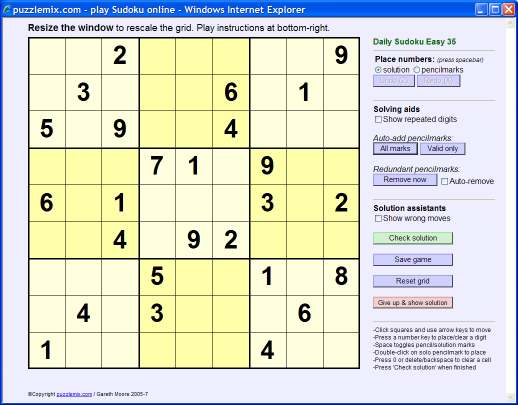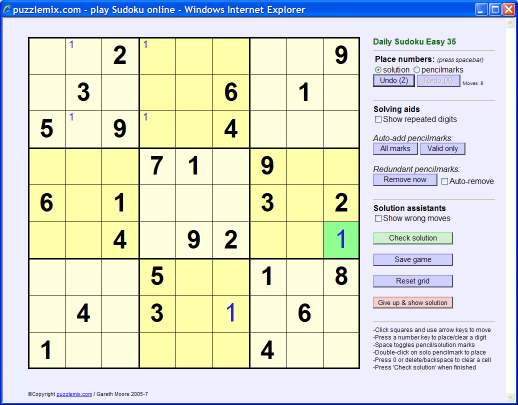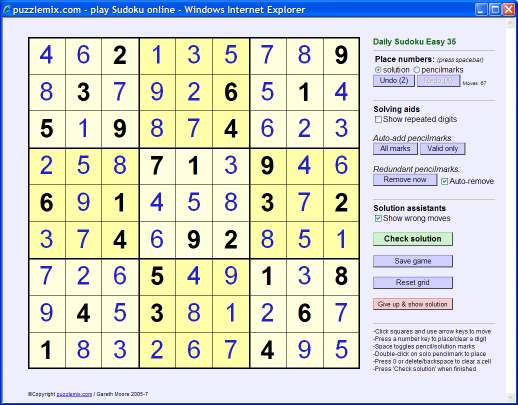A standard Sudoku puzzle consists of a square 9 by 9 grid, with bold lines every third square in order to sub-divide it into nine 3 by 3 boxes.
In other sizes of Sudoku puzzle, such as 6x6 and 12x12, the grid is divided into different shaped rectangular regions, indicated by the bold lines.

The aim is simple: add the numbers 1 to 9 (in a standard puzzle) into the puzzle grid so that each number occurs once and once only in each row, column and marked 3 by 3 box. The marked boxes are further distinguished on puzzlemix by different-coloured backgrounds. In 6x6 puzzles place 1 to 6, and in the 12x12 puzzles place 1 to 9 plus A, B and C into each region in the grid. In 16x16 puzzles place 1 to 9 and A to G.
In the example puzzle shown here you can immediately place two '1's into the grid, one of which is highlighted in green on the far right in the picture below. By considering the numbers already in the grid this is the only place that the 1 can fit in this 3-by-3 box. Remember that each box, row and column must contain each number 1 to 9 once.
Small 'pencilmark' digits have also been added to the two left-most top-row boxes in order to show the potential locations of the '1' in each of these two boxes, columns and rows - pencilmarks are useful for helping keep track of possible solutions as you work through the puzzle.

When this puzzle is fully-solved you will have 1 to 9 in each row, column and 3-by-3 box as shown here:

And that's all there is to Sudoku.